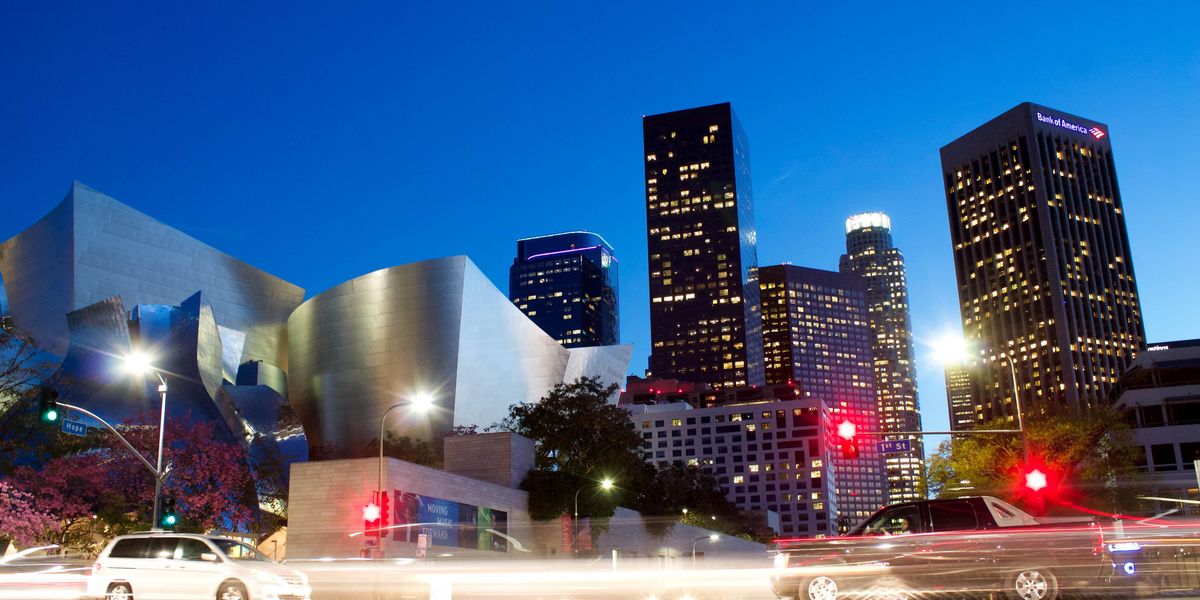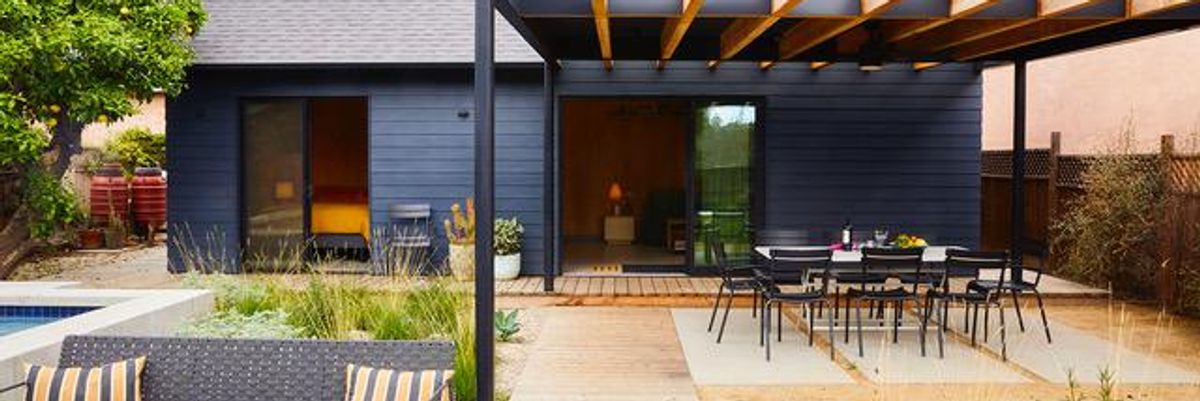

Get in the KNOW
on LA Startups & Tech
X
Design, Bitches
Looking to Build a Granny Flat in Your Backyard? Meet the Firms and Designs Pre-Approved in LA
Sarah Favot
Favot is an award-winning journalist and adjunct instructor at USC's Annenberg School for Communication and Journalism. She previously was an investigative and data reporter at national education news site The 74 and local news site LA School Report. She's also worked at the Los Angeles Daily News. She was a Livingston Award finalist in 2011 and holds a Master's degree in journalism from Boston University and BA from the University of Windsor in Ontario, Canada.
Adding a backyard home in Los Angeles is now nearly as easy as buying a barbecue.
Homeowners who for years have wanted to build a granny flat in their backyard, but dreaded the red tape, can now choose from 20 pre-designed homes that the city has already approved for use.
The shift, made official last week, will speed up a weeks-long process and bring more badly needed units to an overpriced market. It also has the potential to elevate the 14 startups and firms building the next generation of homes.
The designs for the stand-alone residences range from a 200-square-foot studio to a 1,200-square foot, two-story, two-bedroom unit. And many of the homes are filled with design flourishes, reflecting the diverse architecture of the city, from a house in the silhouette of a flower to one with a spiral outdoor staircase leading to the roof.
It's no surprise. The program was spearheaded by Christopher Hawthorne, a former architecture critic at the Los Angeles Times and now the city's chief design officer.
The firms are primarily local and startup architecture and design firms, while others are well-known with a history of building granny flats, also know as accessory dwelling units, or ADUs.
The standard plans avoid the Los Angeles Department of Building and Safety's typical four-to six-week review process and can allow approvals to be completed in as quickly as one day.
Some aspects of the plans can be modified to fit a homeowner's preferences. Eight other designs are pending approval.
Mayor Eric Garcetti believes by adding more such units, the city can diversify its housing supply and tackle the housing crisis. Recent state legislation made it easier to build the small homes on the lot of single-family residences. Since then, ADUs have made up nearly a quarter of Los Angeles' newly permitted housing units.
Because construction costs are relatively low for the granny flats – the pre-approved homes start at $144,000 and can go beyond $300,000 – the housing is generally more affordable. The median home price in L.A. County in January was $690,000.
Here's a quick look at the designs approved so far:
Abodu
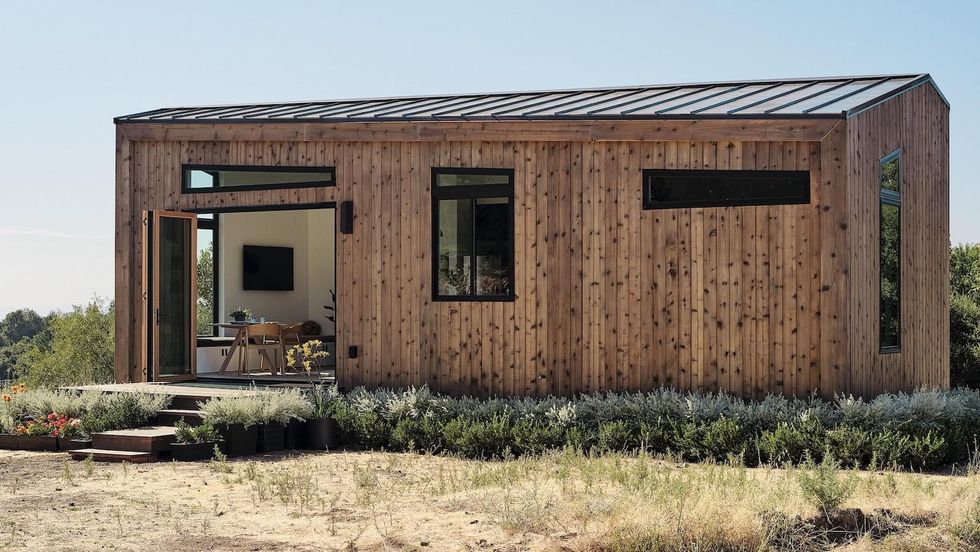
Abodu
Abodu, based in Redwood City in the Bay Area, exclusively designs backyard homes. In 2019, it worked with the city of San Jose on a program similar to the one Los Angeles is undertaking.
In October, it closed a seed funding round of $3.5 million led by Initialized Capital.
It has been approved for a one-story 340-square-foot studio, a one-story one-bedroom at 500 square feet, and a one-story, 610-square-foot two-bedroom.
The pricing for the studio is $189,900, while the one-bedroom costs $199,900 and the two-bedroom is $259,900.
Amunátegui Valdés Architects
Led by Cristobal Amunátegui and Alejandro Valdés, the firm was founded in 2011 and has offices in Los Angeles and Santiago, Chile. Amunátegui is an assistant professor at the Department of Architecture and Urban Design at UCLA.
The firm designs work in various scales and mediums, including buildings, furniture and exhibitions.
Its one-story, two-bedroom with a covered roof deck 934-square-foot unit is pending approval from the city.
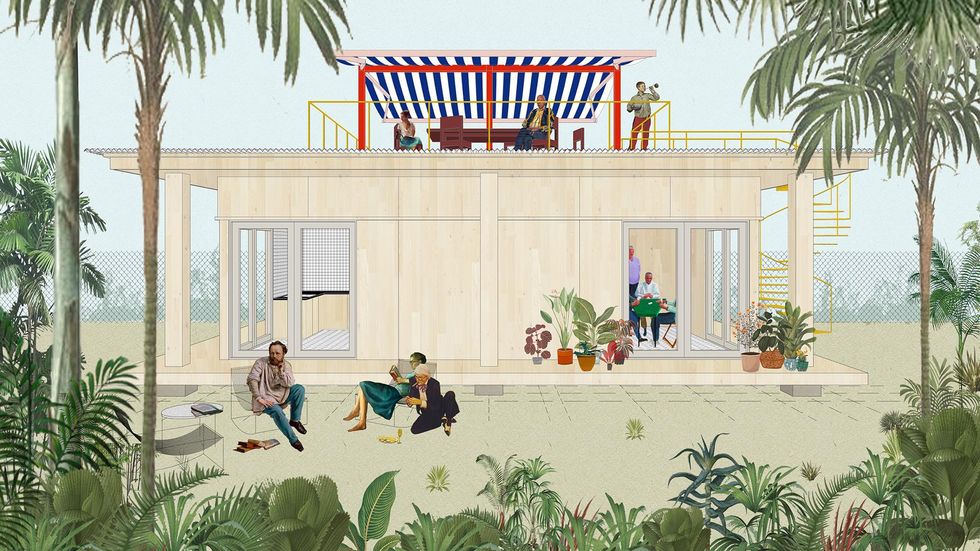
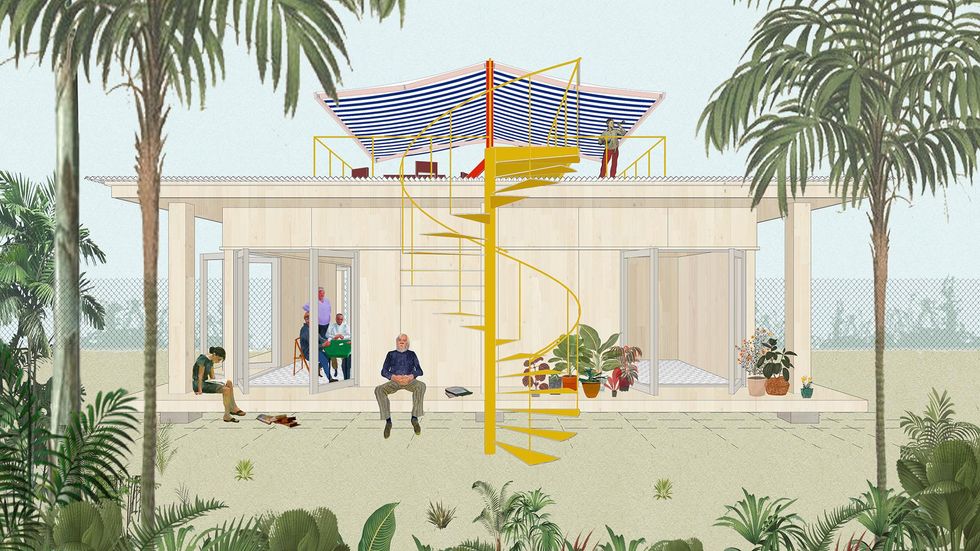
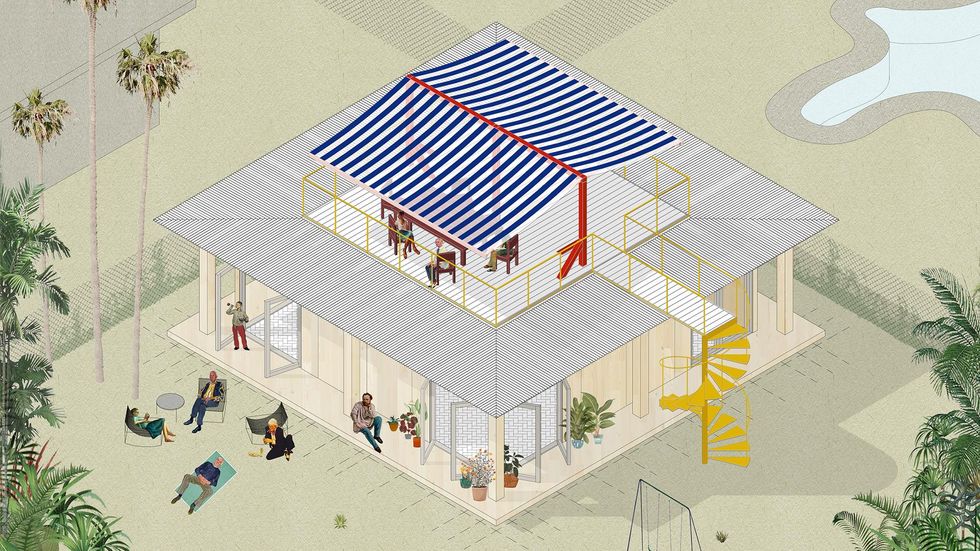
Connect Homes
Connect Homes has a 100,000-square foot factory in San Bernardino and an architecture studio in Downtown L.A.
It specializes in glass and steel homes and has completed 80 homes in California. Its designs have an aesthetic of mid-century modern California residential architecture.
It has two one-bedroom models pre-approved by the city, one is 460 square feet, which costs $144,500 with a total average project cost of $205,000. The other is 640 square feet, which costs $195,200 with a total project cost of $280,000.
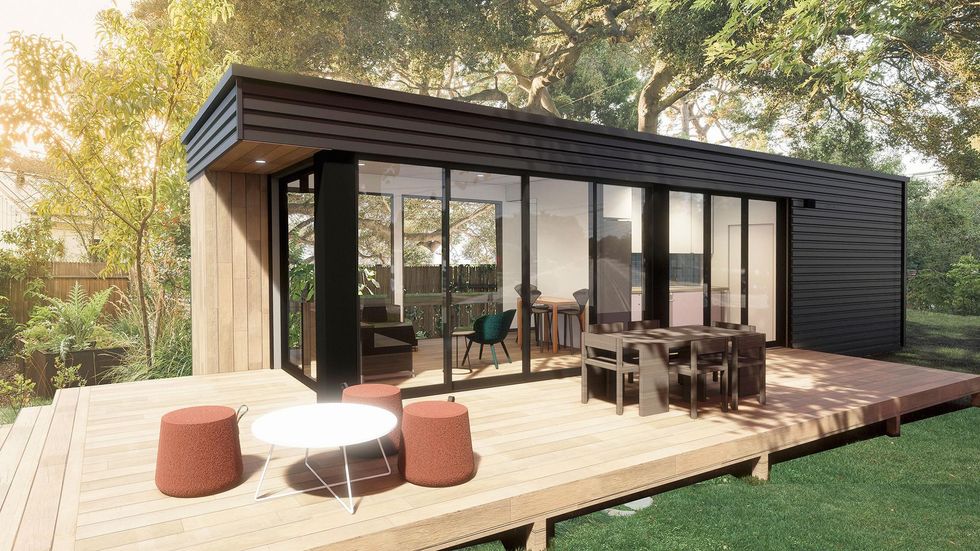
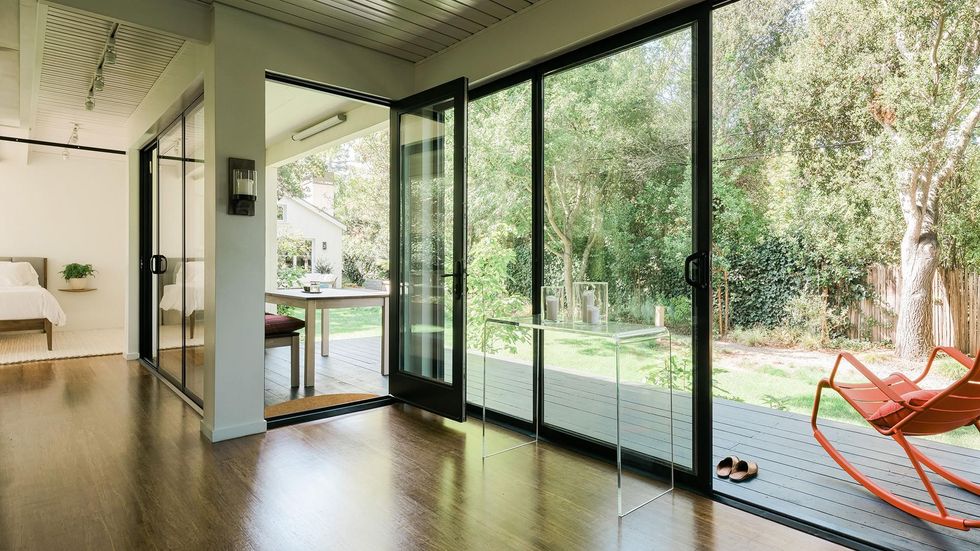
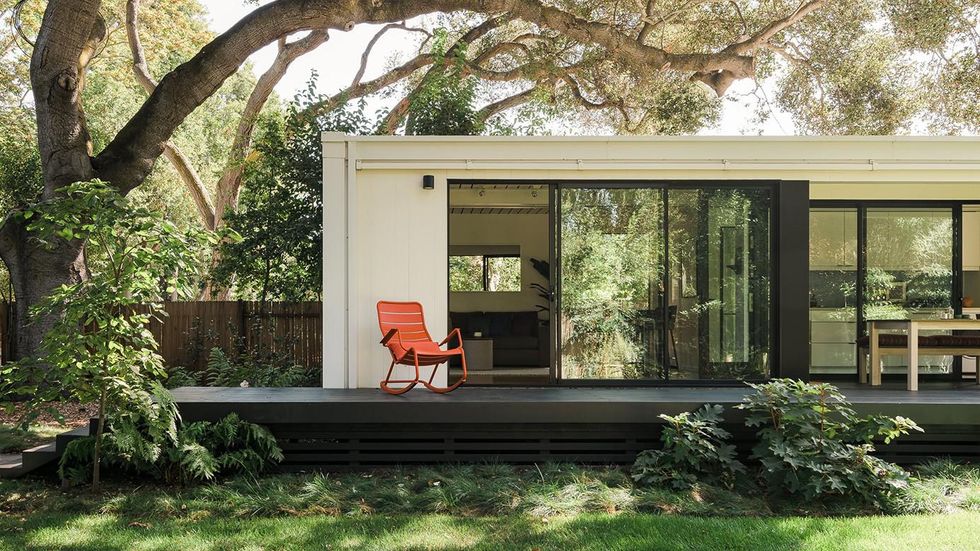
Design, Bitches
The Los Angeles-based architectural firm founded in 2010 describes itself as having a "bold and irreverent vision." Its projects include urban infill ground-up offices to single-family homes, adaptive re-use of derelict commercial buildings and renovations of historic landmarks.
Its pre-approved design, named "Midnight Room," is a guest house/ studio. Its bedroom can be left open for a loft feel or enclosed as a separate room. The design is a one-story, one-bedroom at 454 square feet.
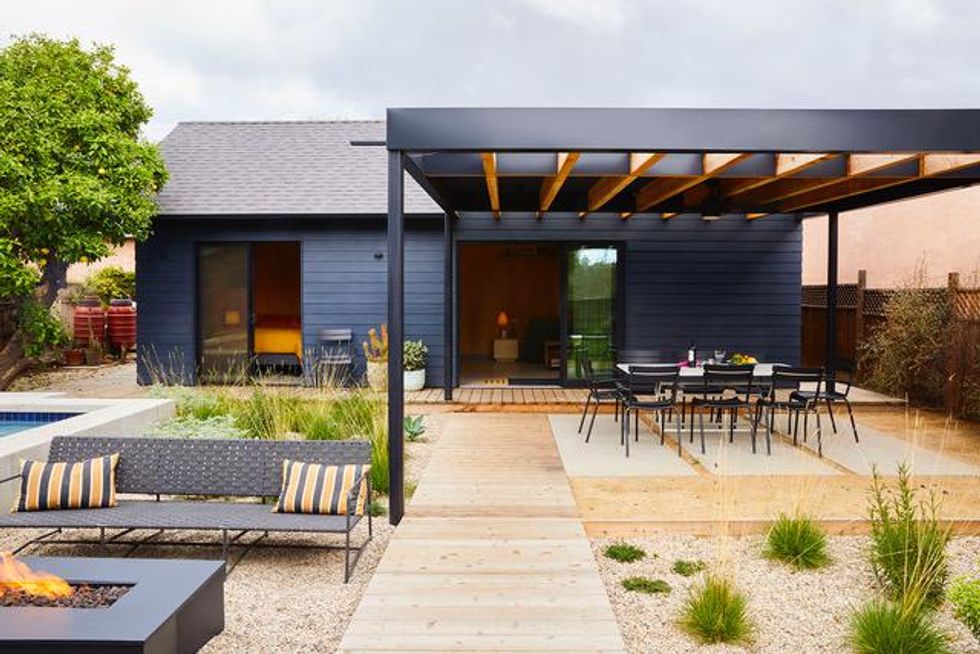
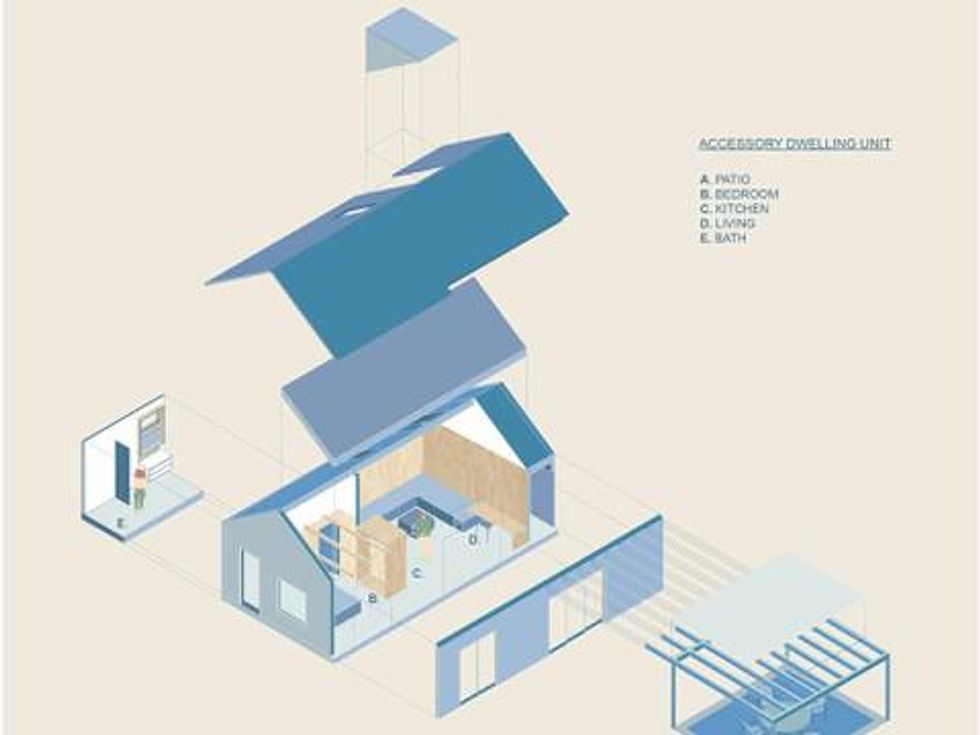
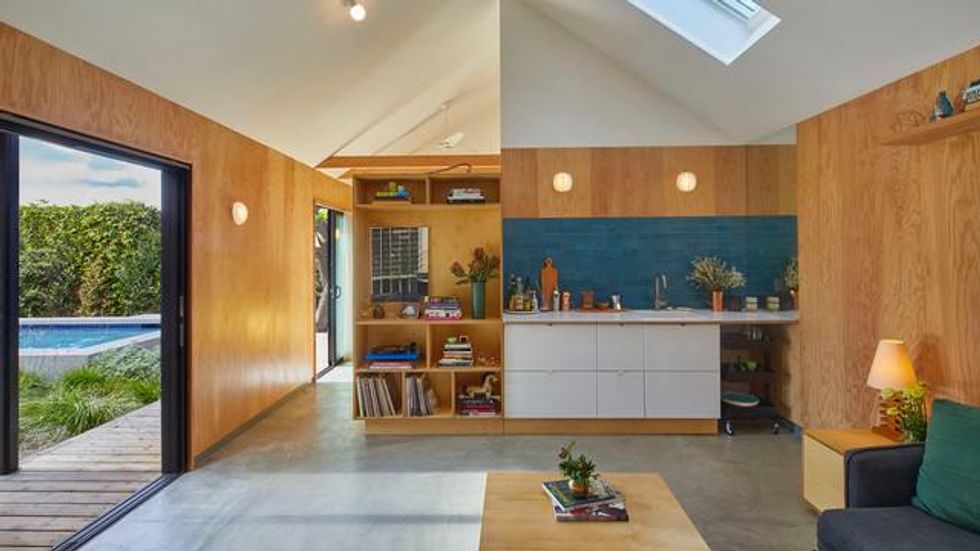
Escher GuneWardena Architecture
Founded in Los Angeles in 1996, Escher GuneWardena Architecture has received international recognition and has collaborated with contemporary artists, worked on historical preservation projects and more.
The company has been approved for two different one-story, one- or two-bedroom units, one at 532 square feet with an estimated cost of $200,000 and another at 784 square feet with an estimated cost of $300,000. The firm noted the costs depend on site conditions and do not include soft costs. Those could add 10% to 12% to the total construction costs.
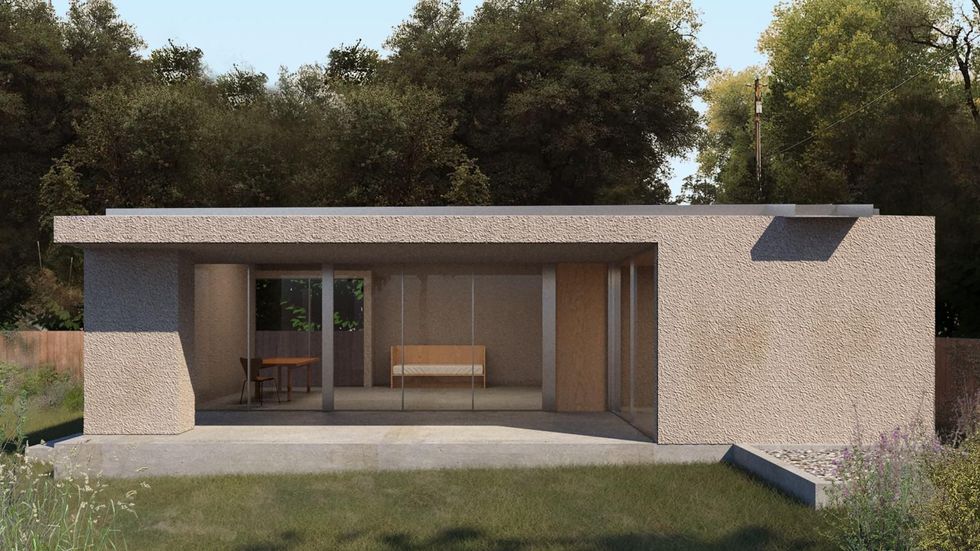
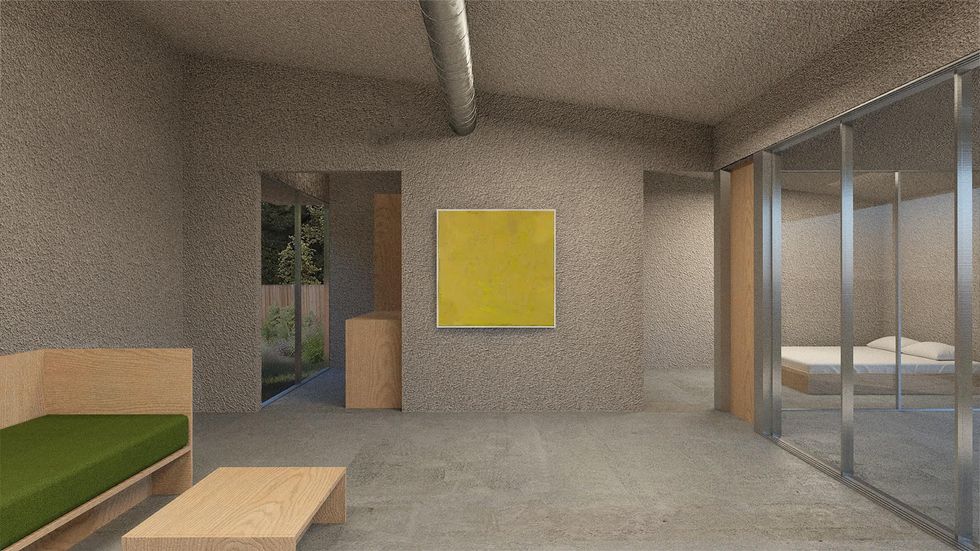
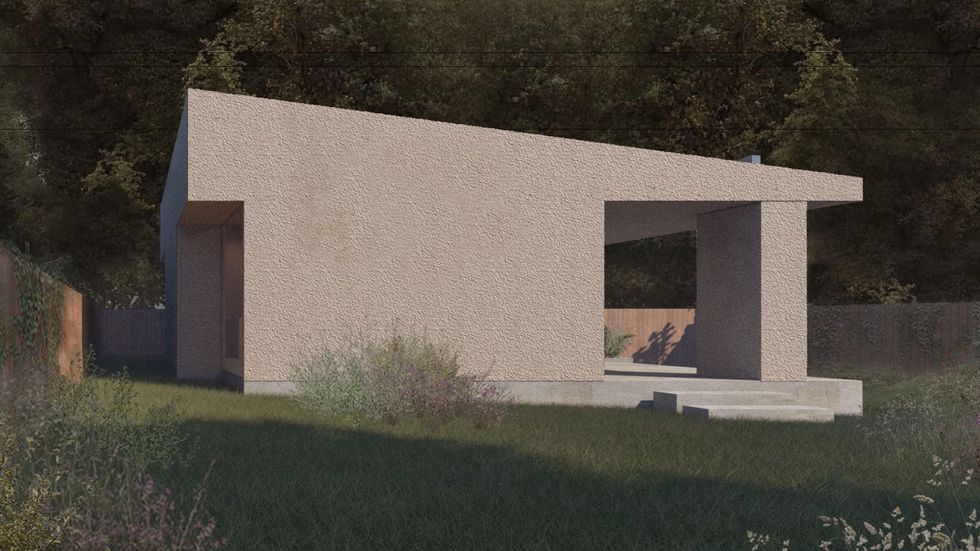
First Office
First Office is an architecture firm based in Downtown Los Angeles. Its approved ADUs will be built using prefabricated structural insulated panels, which allow for expedited construction schedules and high environmental ratings.
The interior finishes include concrete floors, stainless steel counters and an occasional element of conduit.
There are five options:
- A one-story studio, 309 to 589 square feet
- A one-story one-bedroom, 534 to 794 square feet
- And a one-story two-bedroom, 1,200 square feet
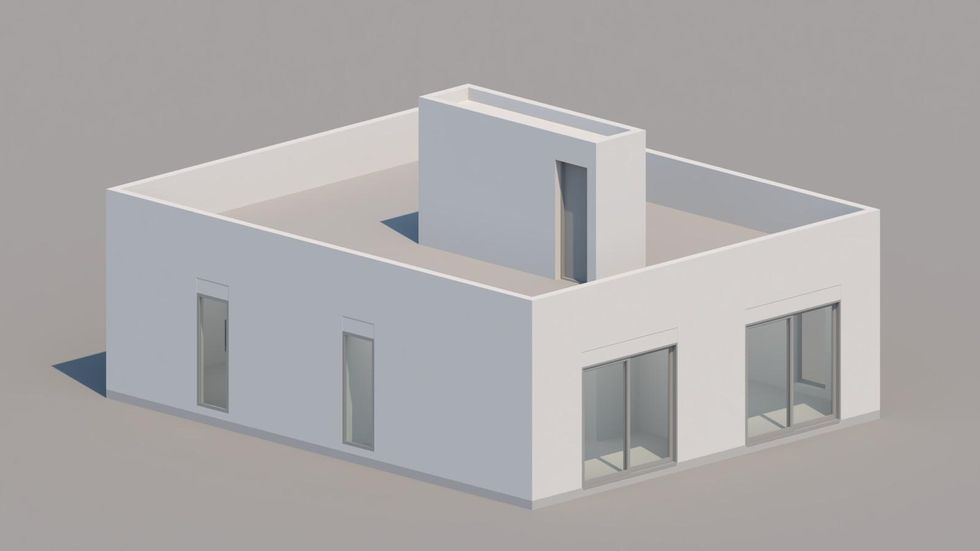
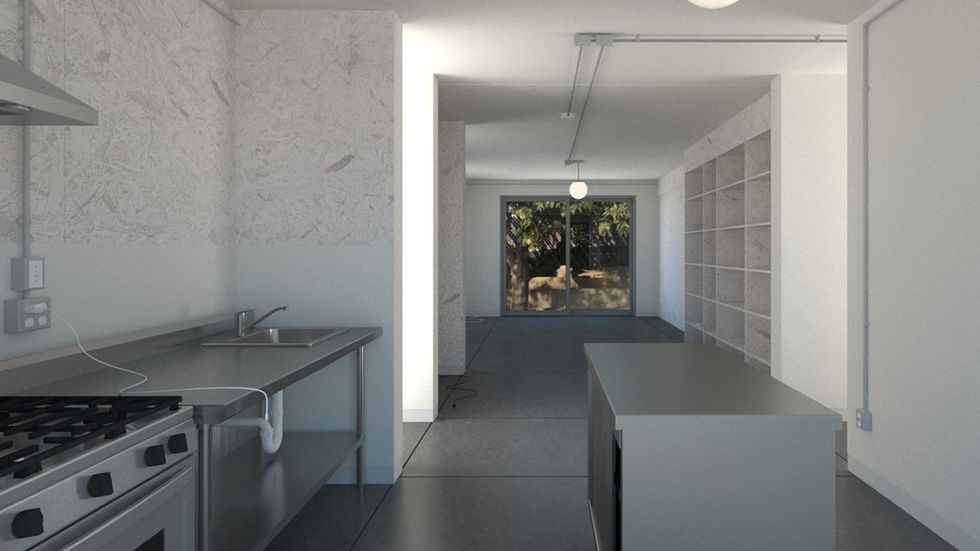
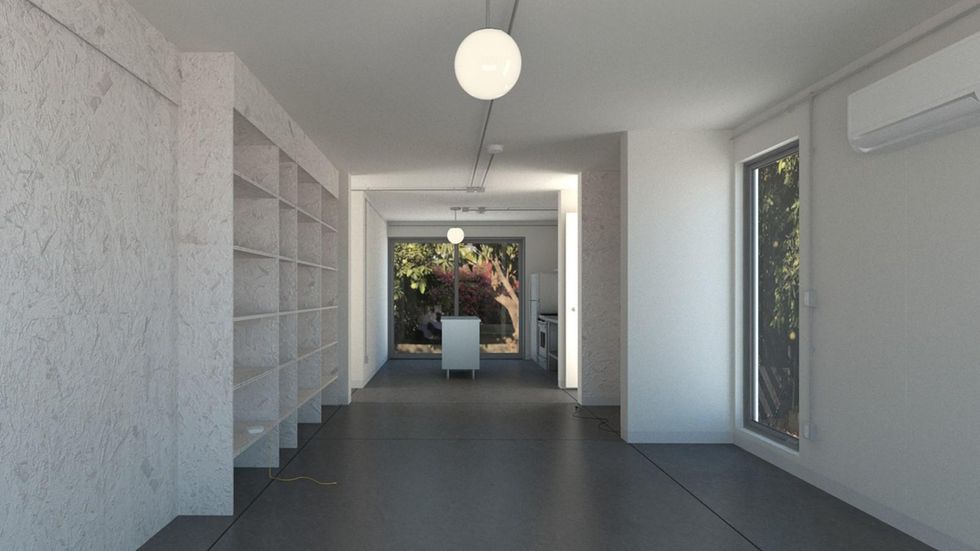
Fung + Blatt Architects
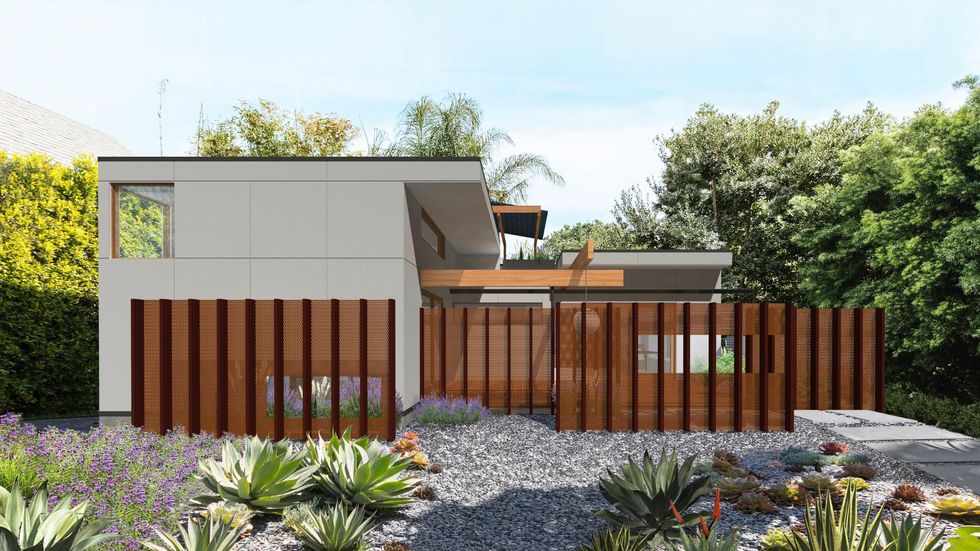
Fung + Blatt Architects is a Los Angeles-based firm founded in 1990.
The city has approved its 795-square-foot, one-story, one-bedroom unit with a roof deck. It estimates the construction cost to be $240,000 to $300,000, excluding landscape, site work and the solar array. Homeowners can also expect other additional costs.
Taalman Architecture/ IT House Inc.
The design team behind "IT House" is Los Angeles-based studio Taalman Architecture. Over the past 15 years, IT House has built more than 20 homes throughout California and the U.S.
The IT House ADU standard plans include the tower, bar, box, cube, pod and court.
The city has approved four options, including:
- A two-story including mechanical room, 660 square feet
- A two-story including mechanical room, 430 square feet
- A one-story studio, 200 square feet
- A one-story including mechanical room, 700 square feet
The firm also has another two projects pending approval: a 360-square-foot one-story studio and a one-story, three-bedroom at 1,149 square feet.
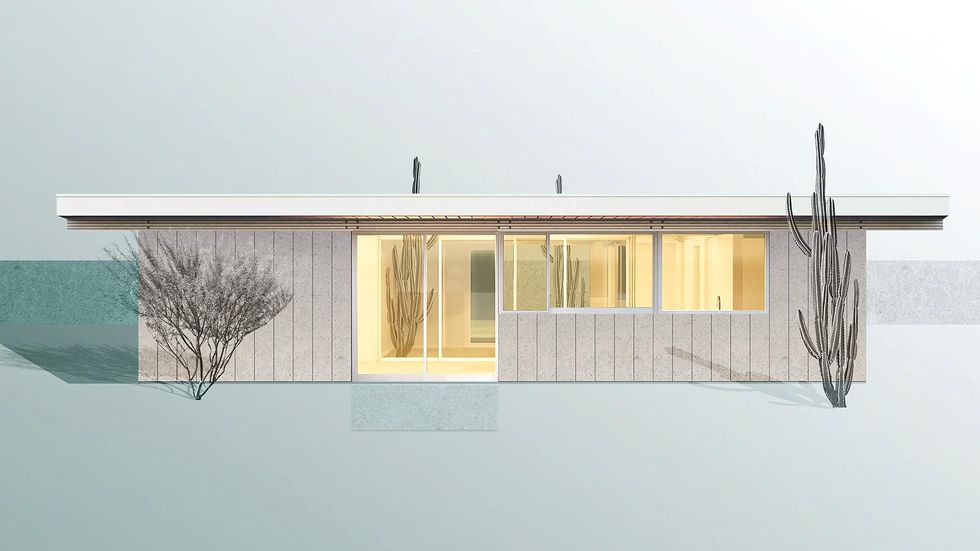
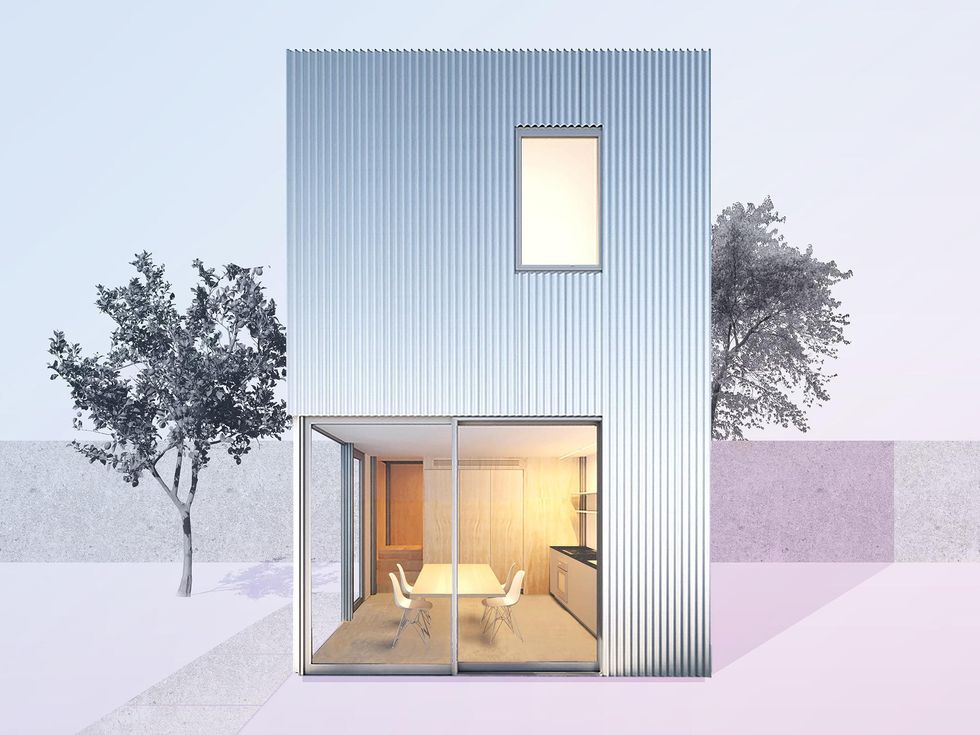
LA Más
LA Más is a nonprofit based in Northeast Los Angeles that designs and builds initiatives promoting neighborhood resilience and elevating the agency of working-class communities of color. Homeowners who are considering their design must commit to renting to Section 8 tenants.
The city has approved two of LA Más' designs: a one-story, one-bedroom, 528 square feet unit and a one-story, two-bedroom, 768 square feet unit. The firm has another design for a one-story studio pending approval. That design would be the first 3D-printed ADU design in the city's program.
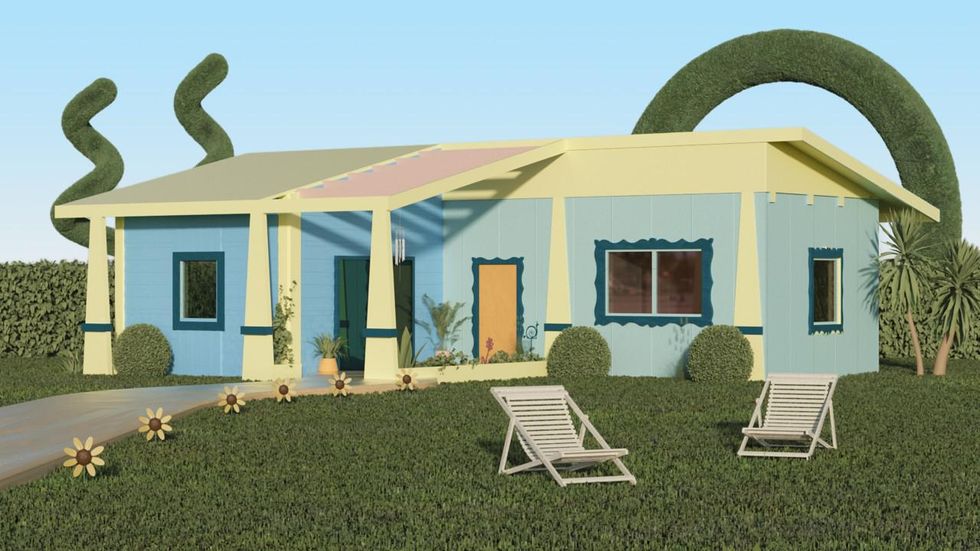

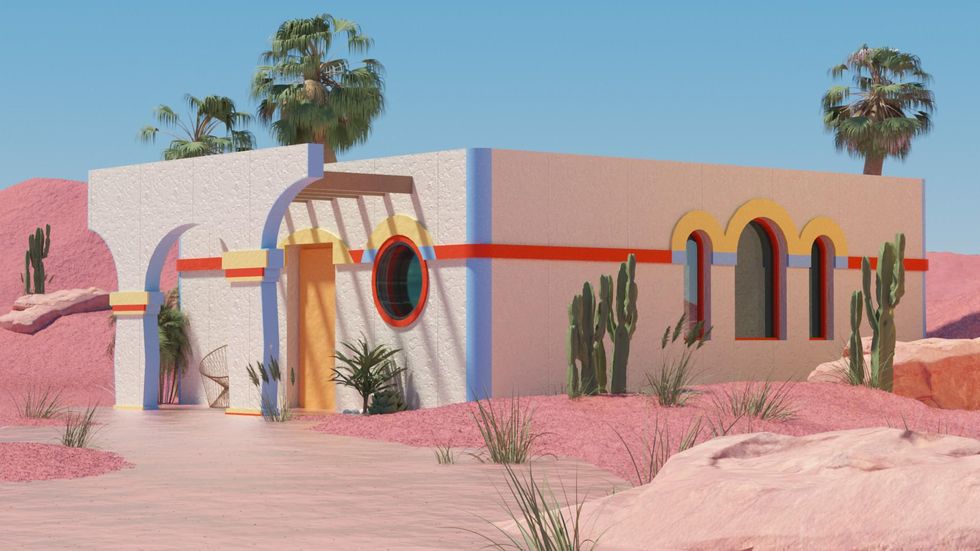
Jennifer Bonner/MALL
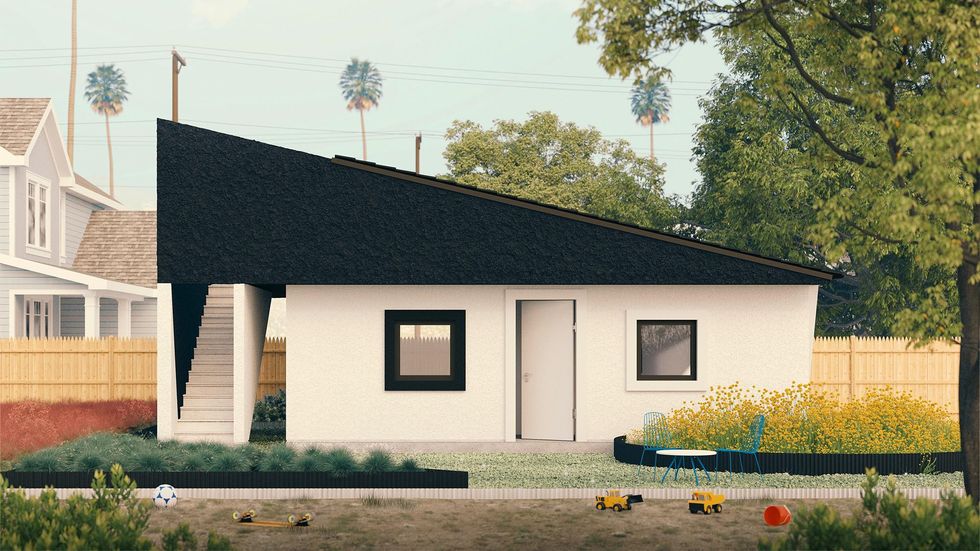
Massachusetts-based Jennifer Bonner/MALL designed a "Lean-to ADU" project, reinterpreting the stucco box and exaggerated false front, both Los Angeles architectural mainstays.
The design has been approved for a 525-square-foot one-story, one-bedroom unit with a 125-square-foot roof deck.
sekou cooke STUDIO
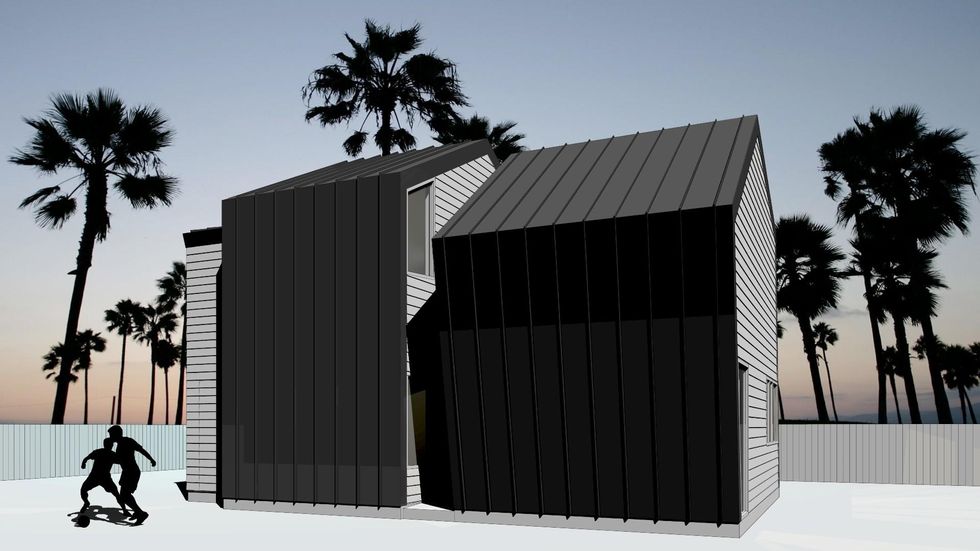
New York-based sekou cooke STUDIO is the sole Black-owned architectural firm on the project.
"The twisted forms of this ADU recalls the spin and scratch of a DJ's records" from the early 90s, the firm said.
Its design, still pending approval, is for a 1,200-square-foot, two bedroom and two bathroom can be adapted to a smaller one-bedroom unit or to include an additional half bath.
SO-IL
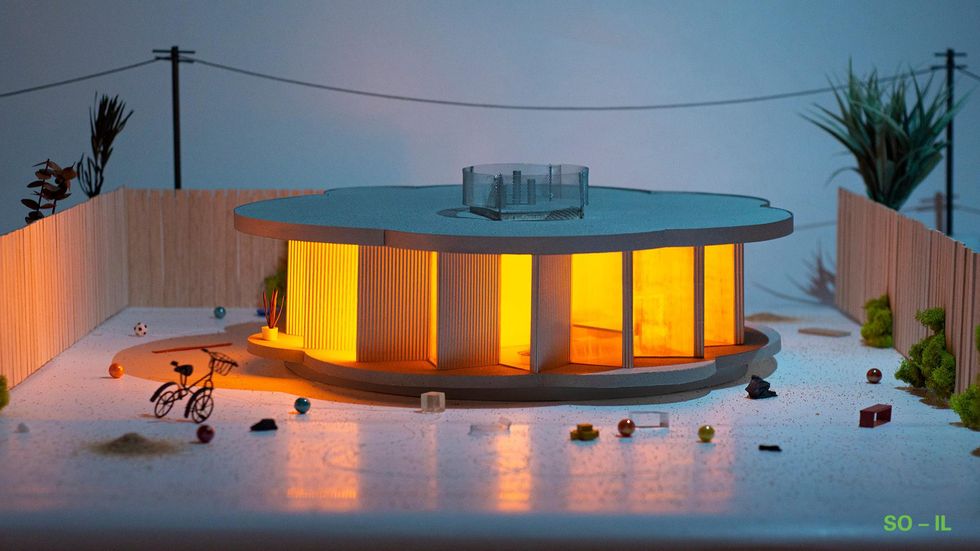
New York-based SO-IL was founded in 2008. It has completed projects in Leon, Seoul, Lisbon and Brooklyn.
Its one-story, one-bedroom 693-square-foot unit is pending approval. It is estimated the construction cost will be between $200,000 and $250,000.
WELCOME PROJECTS
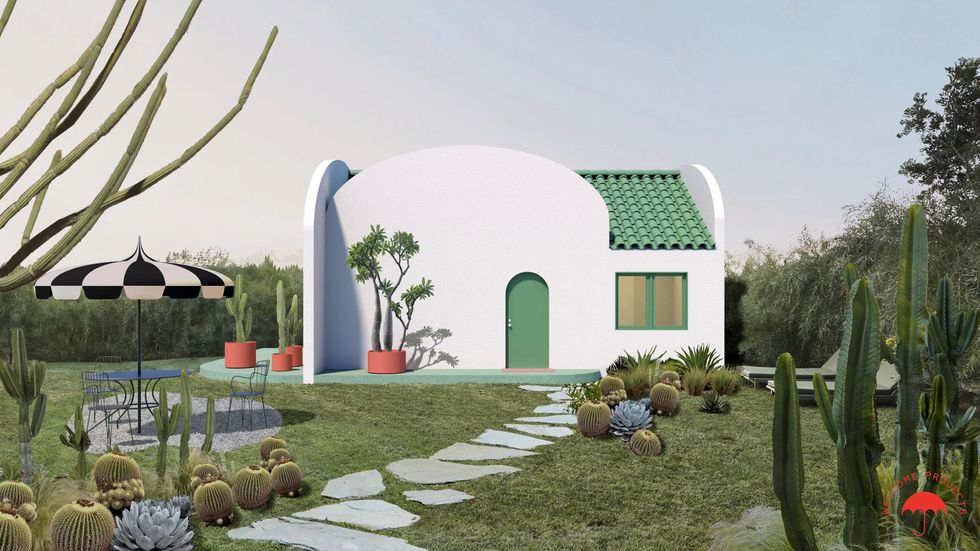
Los Angeles-based Welcome Projects has worked on projects ranging from buildings, houses and interiors to handbags, games and toys.
Its ADU is nicknamed The Breadbox "for its curved topped walls and slight resemblance to that vintage counter accessory."
It has been approved for a one-story, one-bedroom 560-square-foot unit.
wHY Architecture
Founded in 2004, wHY is based in Los Angeles and New York City. It has taken on a landmark affordable housing and historic renovation initiative in Watts.
Its one-story, one- or two-bedroom 480 to 800-square-foot unit is pending approval.
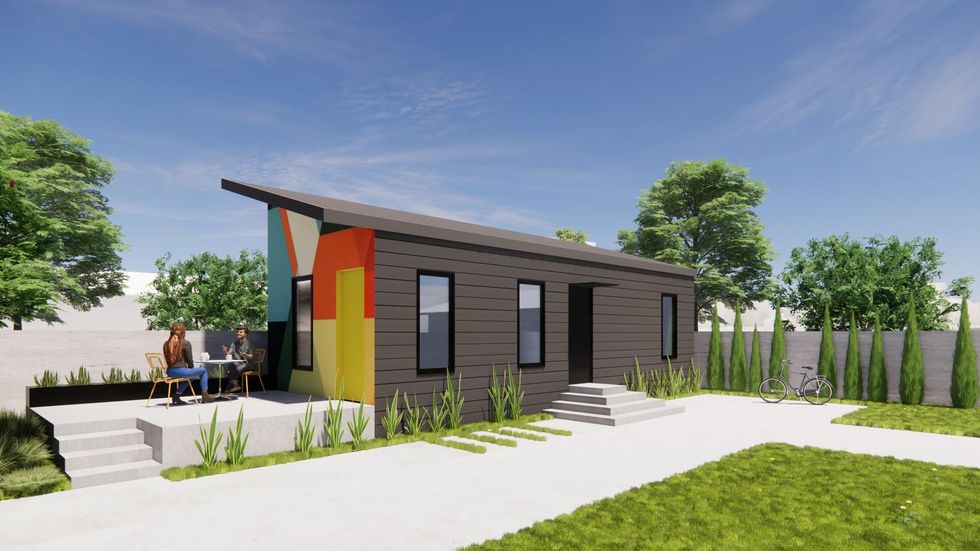
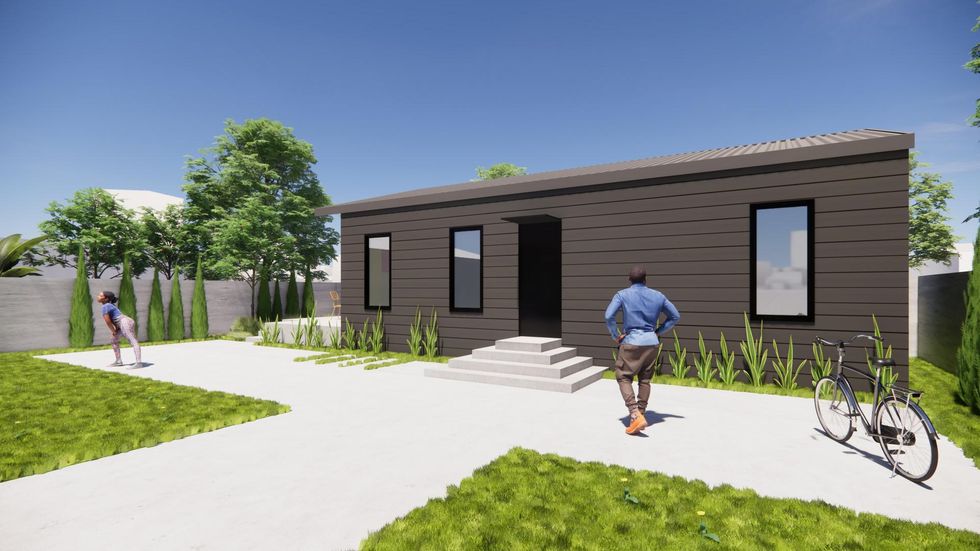
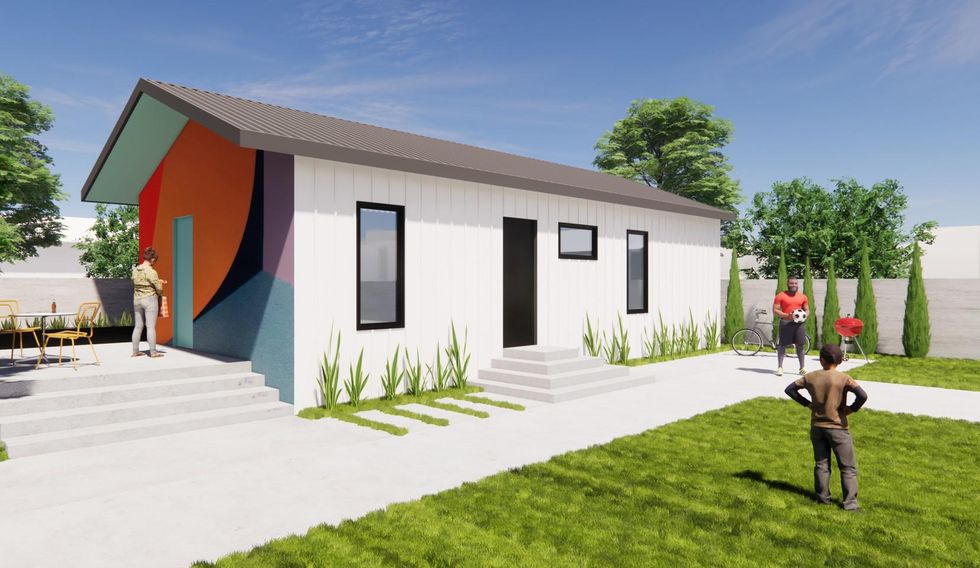
Firms that want to participate in the program can learn more here . Angelenos interested in building a standard ADU plan can learn more the approved projects here.
From Your Site Articles
- United Dwelling Raises $10M to Address the Housing Shortage ... ›
- Plant Prefab Raises An Additional $30 Million - dot.LA ›
- How 3D Printing Could Help Tackle Homelessness in LA - dot.LA ›
- New Bills, New Startups Address Housing in California - dot.LA ›
- LA's ADU Culture Still Faces Financial Barriers - dot.LA ›
- What Will Take To Make Modular Homes Mainstream? - dot.LA ›
Related Articles Around the Web
Sarah Favot
Favot is an award-winning journalist and adjunct instructor at USC's Annenberg School for Communication and Journalism. She previously was an investigative and data reporter at national education news site The 74 and local news site LA School Report. She's also worked at the Los Angeles Daily News. She was a Livingston Award finalist in 2011 and holds a Master's degree in journalism from Boston University and BA from the University of Windsor in Ontario, Canada.
'I Don't Think Anybody Could Have Imagined What Actually Happened.' Former Consumer CEO Jeff Wilke on Building the Amazon Empire
07:00 AM | May 03, 2021
illustration by Eduardo Ramón Trejo
In March, Jeff Wilke quietly stepped away from Amazon, the company he was instrumental in building from an online book retailer to one of the most valuable and influential corporations in the world.
As CEO of Amazon Worldwide Consumer since 2016, he oversaw the company's vast retail business, Prime, the Amazon marketplace, Amazon stores, marketing and Whole Foods.
When Wilke joined Amazon in 1999 to oversee operations the company was doing about $2 billion of revenue a year. Now it brings in about $1 billion every day and last week announced its sales grew by an astonishing 44% year-over-year.
Wilke was long considered the second most important person in the company behind Amazon CEO Jeff Bezos, who shocked the world by announcing his own departure in February.
Bezos called Wilke his tutor and he was seen as a likely successor, but that job instead went to Andy Jassy, the chief executive of Amazon Web Services.
In a wide ranging conversation with dot.LA – among his first since leaving – Wilke says he has no regrets and felt it simply time to do something else.
Wilke also talked about what it was like to work for Bezos and his reaction to last month's failed unionization vote at an Amazon warehouse in Alabama.
This interview has been edited for length and clarity.
You left Amazon only a few weeks ago. What's it been like these past couple of weeks, not being at the helm of that giant operation?
Jeff Wilke: It's certainly been an adjustment and I'm still adjusting. I was there over 21 years and it's a part of me in so many different ways. I have so many connections there still and friends who are there. I spent the first two weeks learning to code in Python, which I thought would be a really good way to stay connected to the engineers that build Amazon every day and upgrade my skills since I hadn't written code in modern languages.
So you're not on the golf course. You're learning Python?
Yeah, it was super fun. It was very immersive. It was a reminder to me of how coding compounds creativity and invention.
Why did you want to depart Amazon?
I just said it was time. I didn't spend any time through the years carefully charting some course. We were building what we hoped would be a lasting, important company and worrying about the customer experience and I got to a point where I felt like it was time to do other things.
Did the job become not as fun with all of the scrutiny from Washington and organized labor and just the giant pressure you were under with all that?
The job was just as fun when I started to think about leaving, which was well before the pandemic. And it was really meaningful last year in terms of all that was accomplished. But it just felt time for me to move on.
Did you want to be the next CEO?
I never really thought about it because I always imagined Jeff doing it forever. When I was making my decision that wasn't what I was thinking about.
But when you heard he was stepping down, were you like, "I should have just stuck around a little longer?"
No. I was super excited and I am super excited for [new Amazon Worldwide Consumer CEO] Dave Clark and for Andy Jassy.
Were you surprised when the other Jeff said he was leaving?
Yes
It's interesting that both of you who had been there over 20 years and in his case founded the company decided at this moment to leave. Do you think he took some inspiration from you?
(Laughs) That's hard to say but I think in many ways the last year or so has been quite a time of self-reflection for many people. It's not surprising to me that if people were maybe thinking in the back of their mind about making a change, the events of the last year would have caused them to think even harder about it. I don't know for sure why Jeff chose the particular time he chose, but he has so many things in his life that he wants to focus on, too. And I'm just really happy for him.
How do you think the company will be different under Andy Jassy?
Andy was a part of the S-team [Amazon's senior leadership group] for a long time and contributed materially to a bunch of the things that are part of the culture. He and I worked with a group of people on a couple of the revisions to the leadership principles that really have guided the company for nearly two decades. And of course the business and culture that he built with the team and AWS is a big part of Amazon and certainly a big part of the technical underpinnings of the way Amazon works. And that's not going to change at all. So I think it's a terrific team with a great mission and a lot of runway because of the businesses that they're in. I'm going to remain a fan.
What was Jeff Bezos like to work for?
You vote with your feet at work, and if I didn't think he was somebody that I enjoyed working for and that I could learn from, I wouldn't have had him as my boss for over 20 years. He and I have different strengths in different areas where we were able to help each other out by learning from each other and of course Amazon is more than just one or two or 10 people – it's thousands and now actually over a million people.
In those early days what did you see Amazon becoming? Did you just think it would be a big bookseller or could you have seen this global colossus?
I don't think anybody could have imagined what actually happened. Too many things had to fall into place. For instance, there was no iPhone or Android system in 1999 when I joined. People weren't carrying around what are basically supercomputers in their hands, which radically changed the way people interact with the World Wide Web. The delivery networks were not nearly as capable as they became over those 20 years. There's a ton of work to do to get costs to a point where you could afford to offer something like Prime. We didn't have a studio so the idea that we would be creating movies and TV shows as a complement to the delivery services as part of the subscription program called Prime – I think it would have been hard to envision all these things in detail.
What was your reaction to the union vote in Alabama failing by a pretty wide margin?
Jeff hit this well in the shareholder letter; the company can always be better at taking care of employees. If I were still there, I wouldn't have hung my hat on the outcome of that particular vote. I would have said there are some signals that we're receiving that say we have more work to do. We should be proud of what we've done – proud of our safety record and proud that we pay industry leading wages and proud that we have 20 weeks of family leave for people who started an unskilled hourly job on day one, which is really unheard of. So, we have all these things that we've done that are great and then there's a lot of things that we can do to get better.
What did you think of "Nomadland"?
The work camper thing was something that sort of naturally evolved. There were groups of people who had come to work only for the holiday at Amazon and they showed up in campers and they were making great money and then they left post-holiday. They started coming back every year. They really enjoyed it. They built email networks together and they coordinated their work. They asked Amazon to help with finding parking lots for the campers and we were happy to do that. But it was really an organic thing. It just sprouted up. I really enjoyed my trips to the fulfillment centers, hearing their stories and then seeing them come back year after year.
Is it hard when you order something now from Amazon and it doesn't arrive on time and you're like, "why did this happen?" Is it hard to get that out of your system after all these years?
Of course. I mean, the team knows any time there's a defect, I'm going to send an email and that's not going to change.
Part two: Jeff Wilke reveals his next chapter.
Lead illustration by Eduardo Ramón Trejo.
Read moreShow less
Ben Bergman
Ben Bergman is the newsroom's senior finance reporter. Previously he was a senior business reporter and host at KPCC, a senior producer at Gimlet Media, a producer at NPR's Morning Edition, and produced two investigative documentaries for KCET. He has been a frequent on-air contributor to business coverage on NPR and Marketplace and has written for The New York Times and Columbia Journalism Review. Ben was a 2017-2018 Knight-Bagehot Fellow in Economic and Business Journalism at Columbia Business School. In his free time, he enjoys skiing, playing poker, and cheering on The Seattle Seahawks.
https://twitter.com/thebenbergman
ben@dot.la
Los Angeles Has More Tech Job Postings Than San Francisco
05:02 PM | February 04, 2022
Photo by Jeremy Bishop on Unsplash
Los Angeles continues to beat San Francisco in terms of the number of tech jobs that employers are looking to fill—with L.A. ranking fourth in the entire country last month in open job postings.
There were 13,437 tech job postings in the L.A. metro area in January, according to data from IT trade association CompTIA. While that number was 791 fewer than in December, Los Angeles maintained its advantage over San Francisco, which ranked fifth in the U.S. with 12,147 tech positions available. Only New York City (19,265), Washington D.C. (17,499) and Dallas (14,916) had more tech jobs on offer than L.A.
That doesn’t mean Los Angeles outpaces all of Silicon Valley as far as new tech jobs, however. San Jose ranked 10th on the list with 8,498 job postings; when combined with San Francisco, that would take the Bay Area’s total tech job postings to north of 20,000, without accounting for other Silicon Valley suburbs.
L.A.’s tech job openings were led by employers like health insurer Anthem Blue Cross (340 postings), consulting firm Deloitte (219), aerospace giant Boeing (206), defense contractor Raytheon (157) and ecommerce giant Amazon (154), per CompTIA data. Software developers and quality assurance testers accounted for the largest chunk of all postings, with 4,013 positions.
The region’s robust tech job market is part of a strong tech hiring economy nationally, and a resurgent U.S. job market overall. Tech companies added 24,300 workers in January—the 14th-consecutive month of tech industry employment growth—while IT occupations throughout the entire economy grew by 178,000, according to CompTIA. On Friday, the U.S Department of Labor reported that the U.S. economy added a total of 467,000 jobs last month, with the unemployment rate standing at 4%.
“By all accounts this was an exceptionally strong start to the year for tech employment,” CompTIA Chief Research Officer Tim Herbert said in a statement.
From Your Site Articles
- L.A. County Tech Salaries Hit an Average of $125K - dot.LA ›
- Los Angeles Tech Hiring News - dot.LA ›
- L.A. Tech Companies Are Still Hiring, Despite the Crisis - dot.LA ›
Related Articles Around the Web
Read moreShow less
Decerry Donato
Decerry Donato is a reporter at dot.LA. Prior to that, she was an editorial fellow at the company. Decerry received her bachelor's degree in literary journalism from the University of California, Irvine. She continues to write stories to inform the community about issues or events that take place in the L.A. area. On the weekends, she can be found hiking in the Angeles National forest or sifting through racks at your local thrift store.
RELATEDTRENDING
LA TECH JOBS


